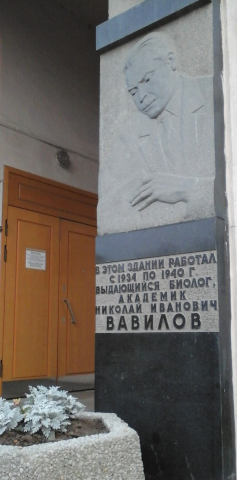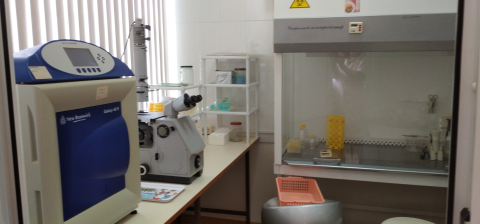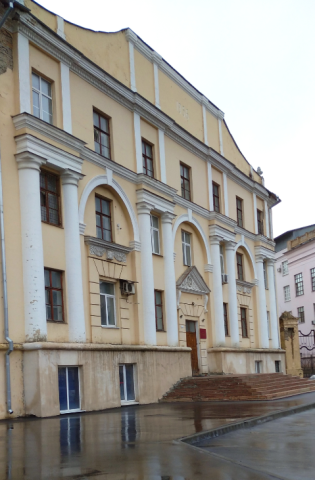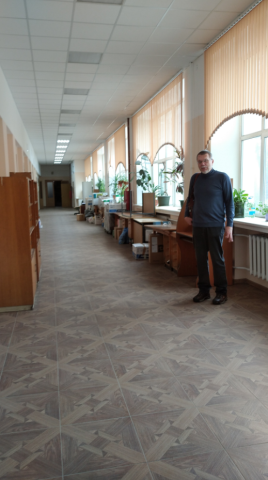Cytogenetics belongs to the field of genetics, to the emergence and rapid spread of which the Russian school of chromosome researchers made a special contribution. The bright period of young science falls in time and place during the years of close interaction between biological institutions in the newly organized complex of institutes of the Academy of Sciences in Moscow in the 1930s-1940s. A new direction in genetics arose in the next decade after the chromosome theory of heredity appeared, experimentally substantiated by the school of T. Morgan in the USA (Morgan et al. 1915). Academician Sergei Gavrilovich Navashin (Works on Applied Botany, Genetics and Breeding, vol. 17, No. 3), a full member of the Russian Academy of Sciences since 1918, was recognized as the domestic founder of "genetic cytology" in 1927, and the most interested "investor" Corresponding Member of the Academy of Sciences and since 1929 Academician Nikolai Ivanovich Vavilov, the largest national figure in the genetic direction in fundamental and applied sciences.

The time and place of the emergence of cytogenetics as a “new and powerful branch” of young genetics, according to N.I. Vavilov, he noted as a grandiose event that took place at the 5th International Genetic Congress in Berlin in 1927. A special issue of the Works of the Institute of Applied Botany, led by Vavilov, was prepared for this forum. A number of years later, the new academic Institute of Genetics, which arose under the leadership of Academician N.I. Vavilov in Leningrad, followed to Moscow following the transfer of the Academy of Sciences from the former to the new capital of the state, where he settled in a common building with other institutions of a similar profile. Since 1934, the history of our institute began and continues here in parallel, only the address changed due to the renaming of the former Bolshaya Kaluzhskaya Street into Leninsky Prospekt and the name of the institute was updated, which invariably bears the name of the founder, academician A.N. Severtsov.
Vavilov was accompanied by his American guest, the fruit-fly studying geneticist G. Meller, for whom a laboratory for the problems of genes and mutagenesis was created, with one of the first employees of the Vavilov Institute, A.A. Prokofieva-Belgovskaya, who performed the cytogenetic part of Meller's brilliant genetic experiments. 8 joint works published by them were later included in the Nobel list of the 1946 prize winner G. Meller. Most of these classic studies were carried out in 1935, 1936 and 1937 here, in this historic building, during the period of close proximity of our institutions. The memorial plaque at the entrance to the IEE RAS on Leninsky Prospekt, 33 (Fig. 1 and 2) and the historical corridor of the Vavilov Institute are visible symbols of the convergence of genetic science with evolutionary science.
Alexandra Alekseevna herself after Meller's departure in 1938 and the defeat of genetics in the USSR in the 1940s was able to conduct fundamental scientific research in difficult conditions and became the most famous domestic cytogeneticist and later the founder of human cytogenetics in our country. Twice Prokofieva-Belgovskaya had to defend her doctoral degree, and both times at our institute, as she said "at Schmalhausen" - academician I.I. Schmalhausen, who took over as director after the death of the first leader A.N. Severtsov in 1936. In 1948, despite a successful defense, she was denied a degree due to obstacles after the Lysenko August session of the All-Russian Academy of Agricultural Sciences, Schmalhausen was deprived of the laboratory and fired, and a new defense took place only in 1965, thanks to the revival of genetics. In 1962 A.A. Prokofieva- Belgovskaya became the head of the laboratory with an unheard-of name - General and space karyology. This laboratory was known to all karyologists of the country.

Direct students and already their pupils created entire directions in human cytogenetics, comparative animal cytogenetics, in the analysis of meiosis and emerging genomics. The scientific "grandchildren" and "great-grandchildren" of the leading mentor of cytogenetics were brought up in the spirit of responsibility for the success of their work. March 26 is the birthday of the great scientist A.A. Prokofieva-Belgovskaya. This year marks her 120th birthday.

In the building where the laboratory of Prokofieva-Belgovskaya was situated before being transferred to the Institute of Molecular Biology, on Vavilova Street, 34, there are now IEE laboratories, which, among other things, present karyological areas (Fig. 3 and 4). V.N. Orlov, L.D. Safronova, N.Sh. Bulatov had met with Alexandra Alekseevna and her employees, and Yu.M. Borisov worked and defended his doctoral dissertation in her laboratory. The topics of laboratories and teams have changed a lot since then, but the cytogenetic direction persists.
Information and photographs of Bulatova N.Sh.

